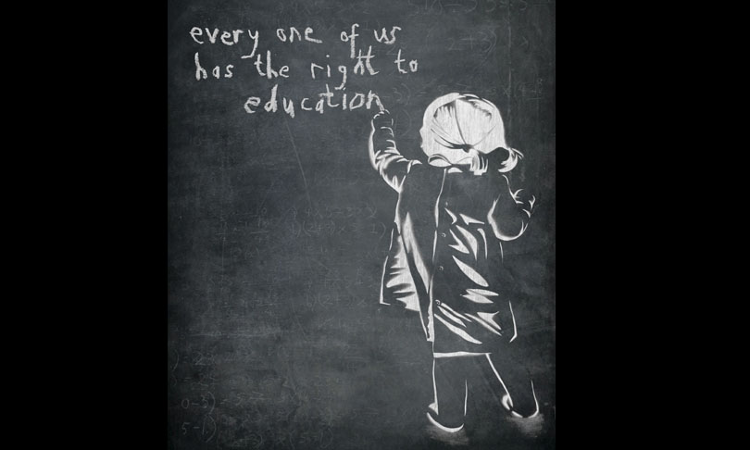Bombay High Court Judgement Celebrates The Purpose Of Right To Education
Rajesh Ranjan
6 Aug 2024 9:00 AM IST

On 19th July, Bombay High Court ruled that the Maharashtra Right of Children to Free and Compulsory Education (Amendment) Rules 2024 is ultravires to the Right to Education Act 2009 and Article 21 A of the Constitution of India.
The amendment added a proviso in Rule 4 (5) of the Maharashtra Right of Children to Free and Compulsory Education Rules 2011 which reads that “Local Authority shall not identify the private unaided schools where Government schools are situated within a radius of 1 km of that school for the purpose of providing 25 percent admission to the children belonging to weaker sections”. Section 12 (1) (c) of the Right to Education Act 2009 mandates that private schools have to reserve 25 percent of the seats for poor and disadvantaged children. In other words, said amendment excluded the private schools from the purview of the Right to Education Act, if the distance between Government/ aided schools and unaided schools is less than 1 km.
What the Court held
The Court upheld the petitioner's contention that the proviso appended to rule 4(5) of the principal rules, i.e. Maharashtra Right of Children to Free and Compulsory Education Rules 2011 overreaches the provision of the RTE Act under which it has been made. The Court said that there is no doubt that the state government is vested with the power to make a rule under section 38 (2) (e) in relation to the neighbourhood school, but the validity of the rule under rule-making powers of the state Government has to be tested on the parameter laid down by the Supreme Court. The court relied on the Supreme Court judgement, in the case of Union of India & Ors. Vs. S. Srinivasan which held that -“ If a rule goes beyond the rule-making powers conferred by the statute, the same has to be declared ultra-vires. If a rule supplants any provision for which power has not been conferred, it becomes ultravires. The basic test is to determine and consider the source of power which is relatable to the rule”. Therefore, the Court leaned in favour of the Right to Education, since the purpose of section 12 (1) (C) is to cast a duty on every unaided school regardless of its distance to give a reservation of 25 per cent to the disadvantageous section.
Celebrating the Purpose of Right to Education and Preventing Apartheid
Scholar Vijay Kumar Damera, have argued that section 12 (1) (C) is the largest educational public-private partnership if it's implemented in true spirit. However, its implementation has serious lapses. In a recent report by Indus Action, (a not-for-profit organisation working on Right to Education) it has been seen that with many low-budget private schools closing during the pandemic years, the total number of children availing this right across the country has consequently marginally declined. The report also reveals that even after a decade of its implementation of Right to Education Act, it has not been implemented in the states of Arunachal Pradesh, Goa, Kerala, Manipur, Meghalaya, Mizoram, Nagaland, Punjab, Sikkim, Telangana, and West Bengal, and the union territories of Andaman and Nicobar Islands, Jammu and Kashmir, Puducherry, and Ladakh. Prof Nalini Juneja a member of the Drafting Committee of the Right to Education Act in her article India's New Mandate against Economic Apartheid in Schools has argued that “the inclusion of this specific provision in the broader framework of the RTE Act aimed to achieve two objectives: to combat the increasing problem of socioeconomic segregation in educational institutions and to broaden schooling opportunities for underprivileged children”. Thus, the Bombay High Court Judgement in Akhil Bhartiya Samajwadi Adhyapak Sabha & Ors. Vs State of Maharashtra & Orscorrectly rejected the State of Maharashtra's contention that the establishment of a sufficient number of schools and spending of a lot of public money cannot be appreciated and the rule-making power of the Government has to be examined from the settled legal position that if subordinate legislation is contrary to the parent act itself, the same would avoid.
Realising Right to Education and Road Ahead
India's caste and class elites for a long time have not only limited the space of knowledge but also captured the expression of the knowledge. Author Braj Ranjan Mani argues that the long-standing nexus of knowledge with power and wealth has been the main source of hierarchies and oppressions since the vedic age. The amendment, which excludes the private schools from the purview of RTE, was nothing but the expression of the mentality of excluding marganisalied from education.
Scholar Anurag Bhaskar argues, "Our emphasis must not only be on providing compulsory education but on quality education to everyone. Otherwise, those on the margins are being subjected to poor quality of schools, and would thus remain in their dire state”. It is the dichotomy of our time that we are still limited in the discourse on whether the right to education is an unfettered fundamental right instead of quality education.
This article is written by Rajesh Ranjan. He is a lawyer and researcher who writes on Public engagement with the Constitution, law and society. Views are personal


